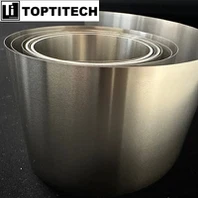 Many people have questions about using H2 in fuel cells during cold weather. If hydrogen fuel is to become a mainstream power source for transportation, it must be able to survive the temperature conditions that cars will face, particularly in locations where winter temperatures plunge below freezing.
Many people have questions about using H2 in fuel cells during cold weather. If hydrogen fuel is to become a mainstream power source for transportation, it must be able to survive the temperature conditions that cars will face, particularly in locations where winter temperatures plunge below freezing.
Fuel cells generate energy by mixing hydrogen fuel and oxygen, resulting in zero carbon emissions. Ongoing initiatives seek to investigate hydrogen as a power source for a variety of applications, including passenger cars and trucks, airplanes, cargo ships, trains, buses, and heavy machinery. Companies, organizations, and teams working on these initiatives require confidence that their work will be sustainable throughout the year.
According to a technical report, fuel cells generate electricity by combining oxygen and hydrogen without emitting any pollutants at any temperature. However, there is a distinction between generating electricity and maintaining performance. The same document indicates that performance remains unaffected within the range of -30ºC (-22ºF) to 45ºC (113ºF).
Of course, performance is not the sole factor regarding winter hydrogen fuel usage.
One concern raised about using hydrogen as fuel in winter relates to exhaust emissions. The emissions consist of water, not carbon dioxide or other greenhouse gases. While water is abundant in nature and generally not considered a worrisome emission, some wonder what happens when the exhaust from all these vehicles freezes. For instance, could the cold water vapor in the exhaust system lead to icy roads?
Experts are unconcerned.
Experts with experience in hydrogen fuel cells are not worried about this issue, and there are several reasons for that. Firstly, they know that traditional gasoline-powered engines already produce a certain amount of water vapor in their emissions, which has not posed any problems for these systems.
Secondly, those familiar with fuel cells understand that the systems generate significant amounts of water vapor. Unless the vapor exhaust pipe is directly aimed at the road and positioned close to the surface (a design that is neither practical nor considered by any reputable car manufacturer), the water vapor will not be emitted onto the road in any significant way. After all, when the water vapor leaves the exhaust pipe, it is warm and disperses into the air in the same manner as the water vapor exhaled by humans.




